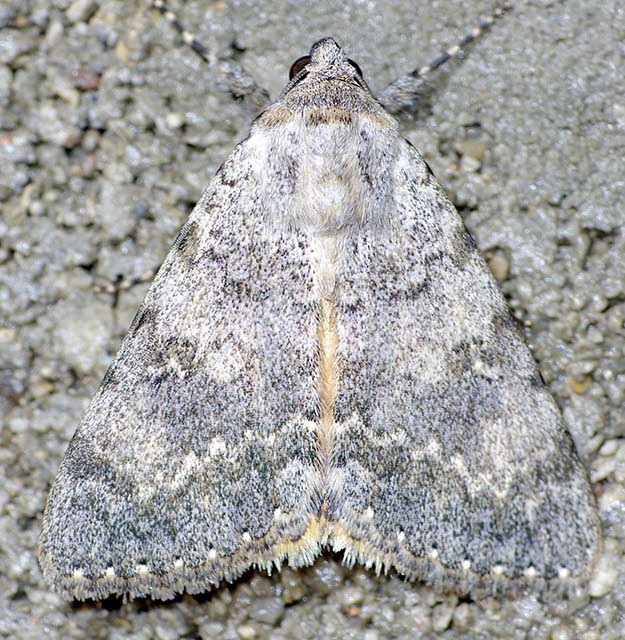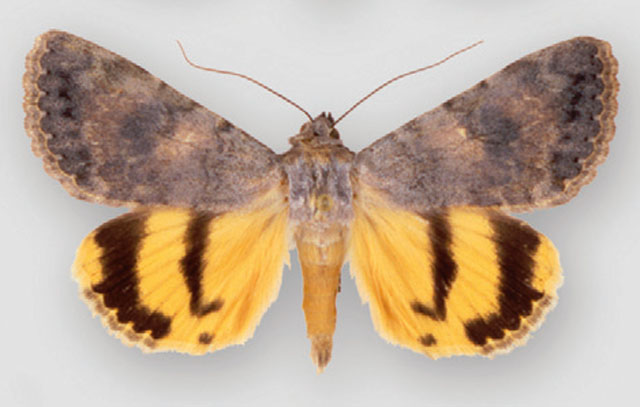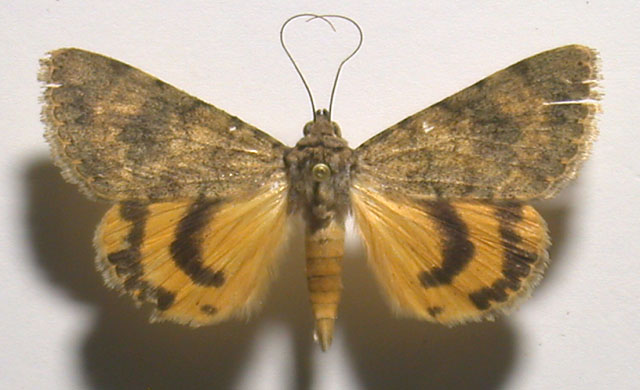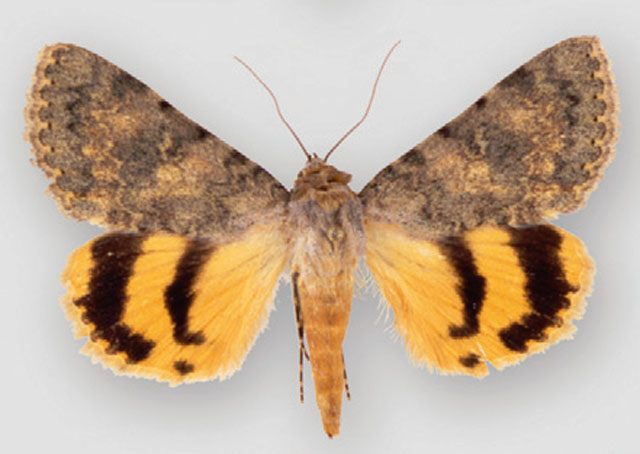Catocala frederici
kah-TOCK-uh-lahMFREH-deh-rick-eye
Grote, 1872

Catocala frederici, New-Mexico, Villa Nueva State Park,
June 30, 2002,
caught by Pierre de Tonnancour at Mercury vapor lamp
images courtesy of Pierre Legault, confirmed by Dave Hawks and Larry Gall.

Catocala frederici, Devils River, Val Verde County, Texas,
May 3, 2019, courtesy of Dave Barker, id by Larry Gall.
This site has been created by Bill Oehlke.
Comments, suggestions and/or additional information are welcomed by Bill.
| TAXONOMY:
Superfamily: Noctuoidea
Family: Noctuidae
Group: Noctuinina
Subfamily: Catocalinae
Genus: Catocala, Schrank, 1802
|
DISTRIBUTION:
Catocala frederici,
(wingspan: 40-52mm), flies in
western Texas: Blanco, Bosque, Brewster, Burnet, Coke, Coleman,
Culberson, Dallas, Dickens, El Paso, Hudspeth, Jeff Davis, Kerr, Kimble, Lubbock,
Randall, Uvalde, Vale Verde: Devils River (DB);
Oklahoma: Cimarron, Kiowa;
New Mexico: Bernalillo, Dona, Ana, Eddy, Lincoln, Otero, Sandoval, San Miguel; COLORADO: Baca; and
Arizona: Cochise.
It has also been reported in
Colorado: Baca; and
Kansas: Douglas, Riley.
The forewing is a blotchy grey-brown with faint lines. The double am line has a large central lobe.
The subrenifrom spot is closed and lighter than suroundings.
The submarginal area is an orangey-yellow.
The hindwing is yellow-orange,
with the outer black band broken and followed by a flattened dot.
The thin inner black band makes an almost 90 degree bend (internally) and is truncated
well before the inner margin. The apex has a large yellow area. | 
|

Catocala frederici male, 53mm, courtesy of David Hawks.
"The ventral surface of the forewing and both surfaces of the hindwing
are similar in both C. frederici and C. caesia, although the patterning is less distinct in
C. frederici compared to C. caesia. However, the even, generally pale-gray appearance
of the forewing upperside in C. frederici is distinctive. The black hindwing bands tend
to be narrower in C. frederici than in C. caesia." David Hawks.

Catocala frederici, New-Mexico, Villa Nueva State Park,
June 30, 2002,
caught by Pierre de Tonnancour at
Mercury vapor lamp
images courtesy of Pierre Legault

Catocala frederici, New-Mexico, Villa Nueva State Park,
June 30, 2002,
caught by Pierre de Tonnancour at
Mercury vapor lamp
images courtesy of Pierre Legault
The wingspan of the above specimen is 52mm. It is very similar to
Catocala delilah which has a wing span of 60-68mm. In
C. delilah the hw outer band on dorsal surface is indented near the
anal angle but it is not broken as with C. frederici.

Catocala frederici bait, Franklin Mountains State Park, El Paso County, Texas,
June 11, 1998, courtesy of Harry King, slight digital repair by Bill Oehlke.
FLIGHT TIMES AND PREFERRED FOOD PLANTS:
Catocala frederici are on the wing from early May to September.

Catocala frederici male, 48mm, courtesy of David Hawks.
"Several species of oaks are present at most of the known collecting localities. C. frederici tends to
inhabit hotter and drier desert mountain ranges than do C. delilah, C. desdemona and
C. caesia." David Hawks.
ECLOSION:
Adults eclose from pupae at soil surface.
SCENTING AND MATING:
Catocala frederici females
emit an airbourne pheromone and males use their antennae to track the
scent plume.
EGGS, CATERPILLARS, COCOONS, AND PUPAE:
Eggs are deposited on
tree bark in the fall and hatch the following spring.
Larval Food Plants
Listed below are primary food plant(s) and alternate food plants.
It is hoped that this alphabetical listing followed by the common
name of the foodplant will prove useful. The list is not exhaustive,
although some species seem very host specific.
Experimenting with closely related foodplants is worthwhile.
Return to Main Index
This page is brought to you by Bill Oehlke and the
WLSS. Pages are on space rented from Bizland. If you would like to become a "Patron of the Sphingidae/Catocala Sites",
contact Bill.
Please send sightings/images to Bill. I will do my best to respond to requests for identification help.
Enjoy one of nature's wonderments: Live Saturniidae (Giant Silkmoth) cocoons.

|

To show appreciation for this site, click on the flashing
butterfly to the left, a link
to many worldwide insect sites. |
Visit Catocala delilah Species Complex; Author: David Hawks.









